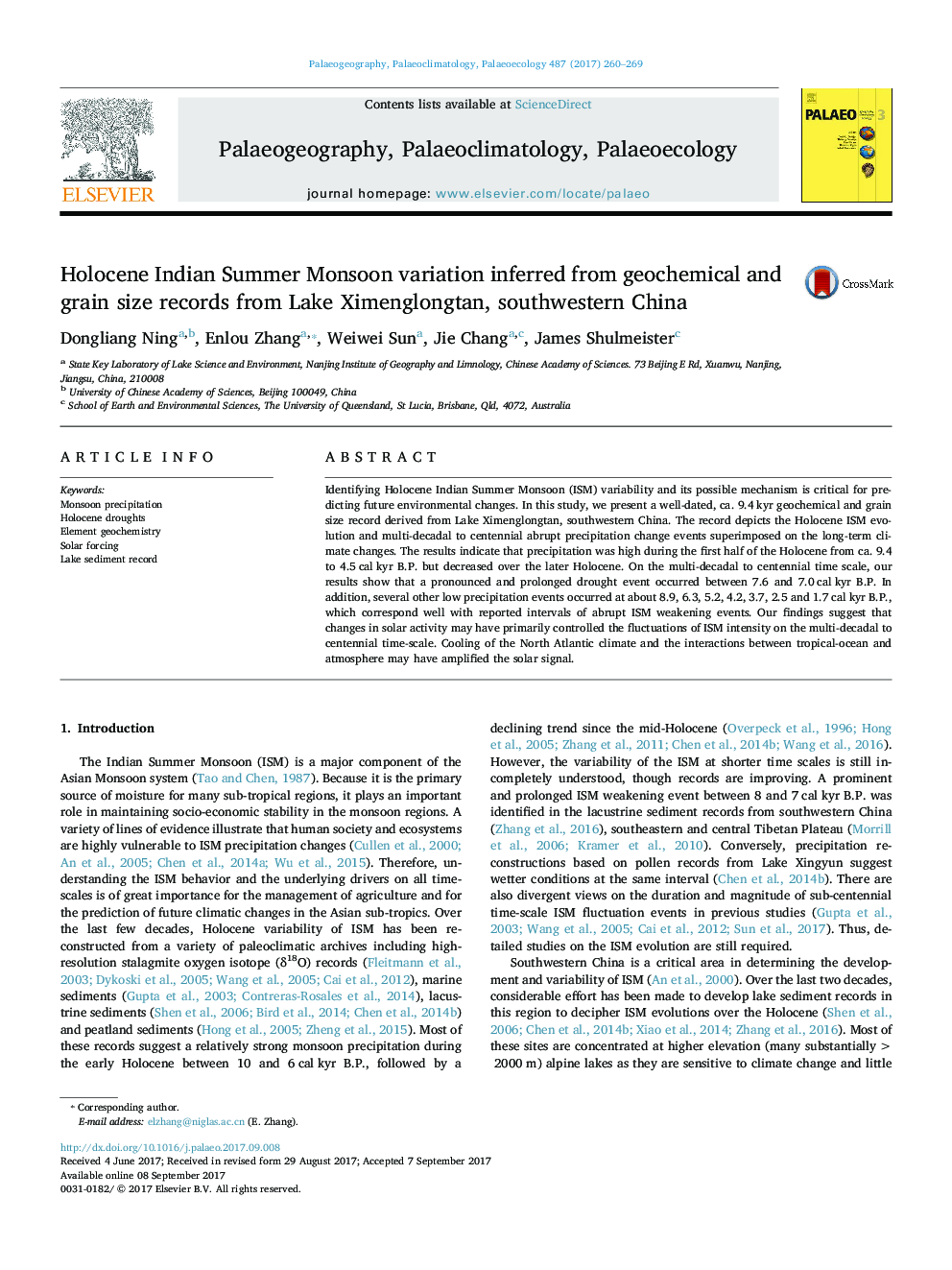| Article ID | Journal | Published Year | Pages | File Type |
|---|---|---|---|---|
| 8868579 | Palaeogeography, Palaeoclimatology, Palaeoecology | 2017 | 10 Pages |
Abstract
Identifying Holocene Indian Summer Monsoon (ISM) variability and its possible mechanism is critical for predicting future environmental changes. In this study, we present a well-dated, ca. 9.4 kyr geochemical and grain size record derived from Lake Ximenglongtan, southwestern China. The record depicts the Holocene ISM evolution and multi-decadal to centennial abrupt precipitation change events superimposed on the long-term climate changes. The results indicate that precipitation was high during the first half of the Holocene from ca. 9.4 to 4.5 cal kyr B.P. but decreased over the later Holocene. On the multi-decadal to centennial time scale, our results show that a pronounced and prolonged drought event occurred between 7.6 and 7.0 cal kyr B.P. In addition, several other low precipitation events occurred at about 8.9, 6.3, 5.2, 4.2, 3.7, 2.5 and 1.7 cal kyr B.P., which correspond well with reported intervals of abrupt ISM weakening events. Our findings suggest that changes in solar activity may have primarily controlled the fluctuations of ISM intensity on the multi-decadal to centennial time-scale. Cooling of the North Atlantic climate and the interactions between tropical-ocean and atmosphere may have amplified the solar signal.
Related Topics
Physical Sciences and Engineering
Earth and Planetary Sciences
Earth-Surface Processes
Authors
Dongliang Ning, Enlou Zhang, Weiwei Sun, Jie Chang, James Shulmeister,
